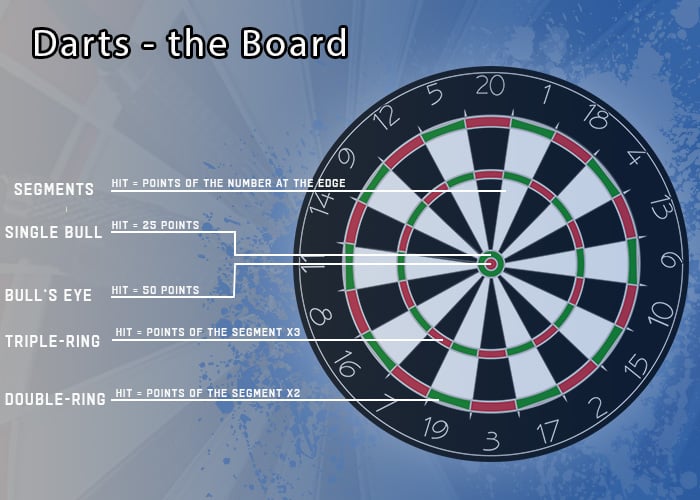The generally most popular game mode in darts, is the already mentioned 501 with Double Out. It is usually played in a first-to-leg mode, where the aim is to be the first player to win a predetermined number of legs. However, there are many other darts variants that also enjoy great popularity. Some darts variants are also seen at certain professional tournaments - others are only played among hobby players.
World Cup Darts Rules
The World Darts Championship rules are slightly different from the usual tournaments. To win a game of darts in the World Championship, the player must win a predetermined number of sets. In the first two rounds, three sets are needed to win the match. Whoever wins three legs first in a match at the World Darts Championship wins the set. This mode is special because it depends much more on the right timing and less on the average score. In theory, it is possible in the World Darts Championship for a player to win more legs than his opponent and still be eliminated from the tournament as a loser.
Straight Out
With the "Straight Out", any square may be thrown at to win the leg, as long as the player gets to 0 points with the throw. Because it is very difficult to hit the double squares, the straight out is a popular variant, especially with beginners.
Double In und Double Out
In this dart variant, the points are only counted as soon as a double square has been hit. If the player misses a double field with the first three darts, he scores 0 points in this shot. The World Grand Prix is the only professional darts tournament played in double-in mode.
Team-Darts
Darts can also be played in 2 vs. 2 in addition to the classic 1 vs. 1. In this game mode, the teams take turns throwing against each other. The exciting thing here: Often, the throwing player has to give his teammate a finish. The fields to be hit and the check-out attempts often differ from the teammate. This makes for an exciting tournament, especially for professionals. The only team competition on the professional tour is the World Cup of Darts, where pairs of players from the respective nations are formed to compete against each other.






.png)









































































